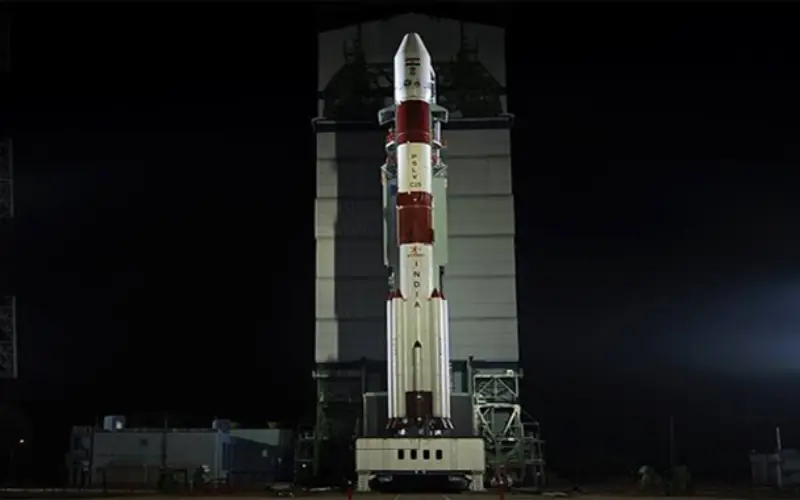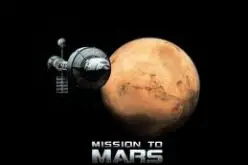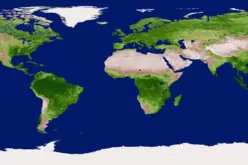India’s First Mars Orbiter Mission Heads its Journey Successfully to Mars for an about 400 million km.
India’s first Mars orbiter Tuesday successfully began an around 780 million km long journey to Mars, making it the first Asian country and the fourth in the world to undertake a mission to the red planet in the hope of finding methane and minerals. Now ISRO, has become the fourth space agency to reach Mars, after Roscosmos, NASA, and ESA.
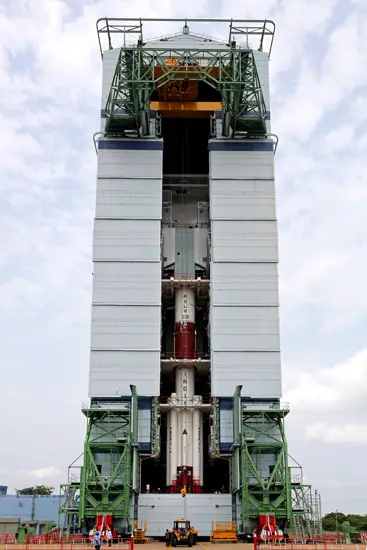
PSLV-C25 after the integration of all its four stages at Moible Service Tower; Source: ISRO
Exactly at 2.38 p.m., the Indian-made rocket – Polar Satellite Launch Vehicle-C25 (PSLV-C25) standing around 44 metres tall and weighing around 320 tonnes – rose from its launching pad for its journey to Red Planet.
The launch rocket “has placed the Mars Orbiter spacecraft very precisely into an elliptical orbit around Earth,” K Radhakrishnan, chairman of the Indian Space Research Organisation (Isro), said from the control room.
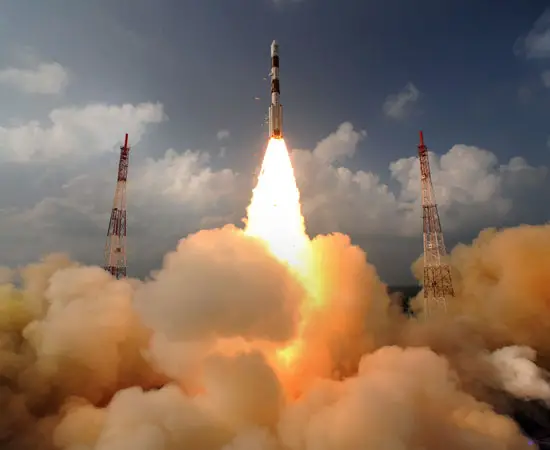
PSLV-C25 Lift Off; Source: ISRO
Dr. K Radhakrishnan also said ” journey has only begun, it’s a long mission, and expected to reach the Mars on September 24, 2004″.
The orbiter would be in an Earth orbit till the wee hours of December 1. Till, then the orbiter will go in an elliptical orbit 250 km at its nearest point to the Earth and 23,500 km at the farthest. Thereafter, the spacecraft will start a 300-odd day journey to Mars, through the phases of influence of Earth, Sun and finally Mars.
One of the main objectives of the first Indian mission to Mars is to develop the technologies required for design, planning, management and operations of an interplanetary mission.
The orbiter now heads to the red planet that gets its red hue from the iron in its soil. Named after the ancient Roman god of war, Mars is the fourth planet from the Sun and the planet closest to Earth. NASA says Mars is about one-sixth the size of Earth.
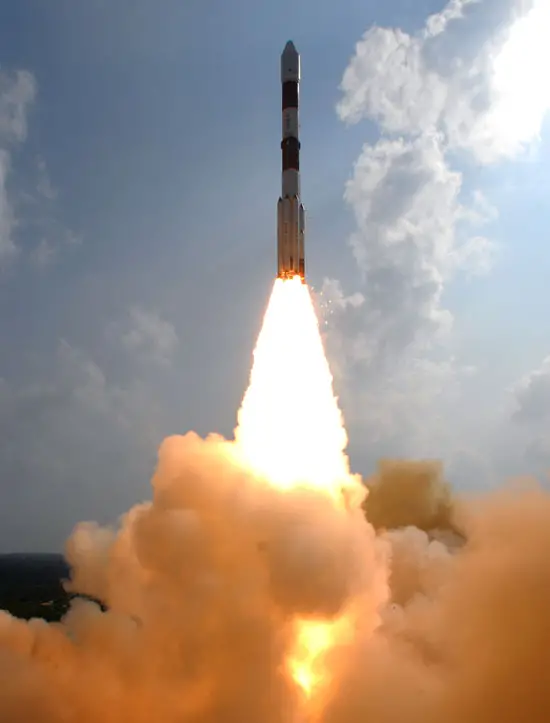
PSLV-C25 Lift Off; Source: ISRO
SK Shivakumar, director, Isro Satellite Centre, summed up the pride. “Our baby (Mangalyaan) is up in space looking for scientific objects. We have a long way to go,” he said to loud applause.
The flight parameters including time, relative velocity, range and altitude were constantly shown on screen, as the range operation director kept announcing intermittently: “Everything normal.”
Related Topics
The Mangalyaan – India’s Journey to Mars
India’s Mars Mission Satellite Integrated With Rocket, Launch Date Revised
India’s Mars Orbiter Mission Brochure


